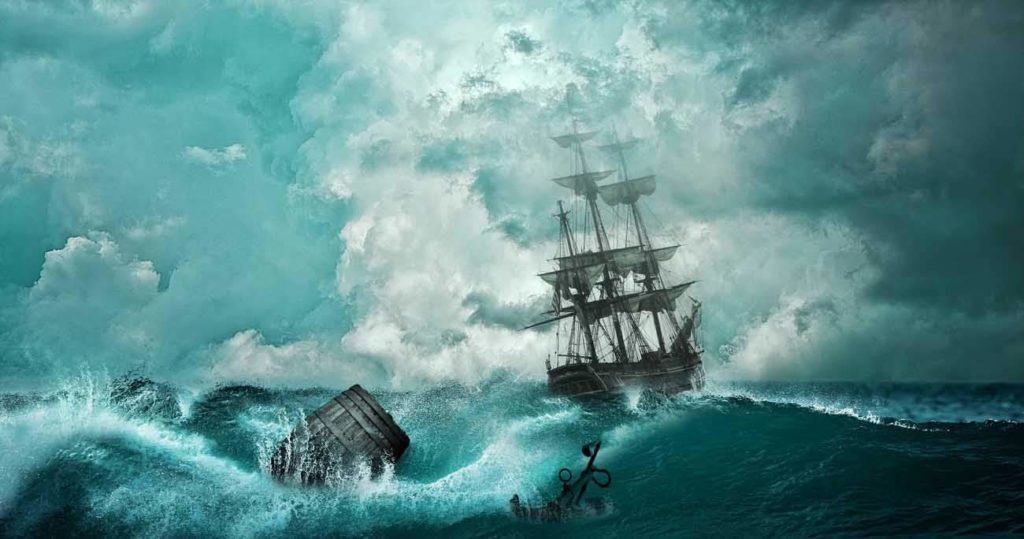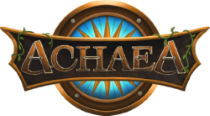Unsung Heroes

How far had Himalia sailed to uncover the edges of the known map? Farther than any of them, they soon discovered, for it was a different time with different dangers. The Himalia of legend began her journey alone, returning rarely with friends and loyal followers in her midst. Yet one thing was certain. Wherever she went, adventure followed. Her mythic blood sang with it, and so it was simple for her memory to accept each new crew that landed aboard her ship, attributing their confusion and strange, modern ways of speaking to too much rum and a poor night’s sleep upon the high seas.
As Time continued to warp, the breadth of Himalia’s discoveries became clear. She had gone as far west as the Chelic Ocean, a vast sea between the Belt of Khalas and the Uru-khan Protectorate. There her sloop was set upon by the appearance of an old marine predator: the lussuaq. One by one, a series of hapless adventurers were brought down and eaten alive by the hungry pod until a small but tenacious crew of Ilsefi, Ficus, and Ulvin put down the final lussuaq on a deck awash with blood.
Further north, Himalia neatly avoided wrecking on the Lost Coast as jagged rocks suddenly loomed from the mists, aided by the sailing of Blackwillow, Kasotus, and Tymbi. The isles were as ghosts, blanketed by fog and unearthly quiet. Crossing a grey beach, the group found entry into a forgotten mausoleum recessed into the earth, a monument to the suffering of one woman immortalised in stone. Kestrella dusted off the ancient plaque and Ulvin began solving the riddle before a single tear slipped from the young Eleusian’s eye, falling upon the unmarked tomb. With a wailing sob a crowned myling arose from the dusty crypt, an infant ghost consumed by revenge at being ripped from his mother and smothered in his crib. Such was the fate of royal bastards on the Grey Isles, a fate to which Kinilan and Jaakobah bore witness.
More memories of the storied past saw Himalia chart the sea around the eastern coast of Bandar Selam. To the east beyond the Eusian Ocean lay so much of the world undiscovered, seen first by the eyes of Tahquil, Imyrr, Eoka, Gallus, Laorir, and Faerum. Here was moon-rimed Aitanu, there the endless coastline of mighty Karth and the limpid blue waters of Heaven’s Bay. Himalia scrawled all that she could see on her map, pledging with a warm smile to share it with Ortho when she saw him again.
She never would.
–
In Himalia’s absence, Ortho had been seized by the military of Kr’kach to whom he belonged, and at whose scheming hands he would be tried and found guilty of treason. Along with her lover, the horkvali army had stolen a fragment of the Sceptre of Divinity that Himalia travelled with, demanding its secrets and the knowledge of how to wield it from the imprisoned soldier. When the noble horkval would not relent under pain of torture and death, the militant colony of Bandar Selam, loyalists of the Hive Queen, did what they had been ordered to do by Aegis in a time of war. They took him apart. Ortho was summarily executed atop the peaks of Kr’kach, his final words a vow to Himalia which he would keep even in death.
With his last breath, Ortho had, knowingly or unknowingly, transferred the life-giving energy of the Sceptre, still flecked with his blood, away from the mountains and horkvali interference. It settled instead in the great lake on Bandar Selat, where he had spent many a night in the adoring arms of his Himalia. He would not live to see her grief, her fury, or the scores of bugs cut down by her sabre in her recovery of his body and the unharmed Sceptre of Divinity. Weeping bitter tears of regret, Himalia buried him by the glittering lakeside.
Unbeknownst to her, the first grook tadpoles were emerging from the lake.
Soon Himalia sailed away, the memory of Ortho’s death and all they had shared too painful for her to bear. It was in these long years that passed when she busied herself with Azatlan and Esim, the Valassan Sea, the enduring conflict between the tritons and Kashar, and on, and on, and on. The years before her return whirled by, and just when she thought her heart had healed, she remembered the little tadpoles.
What had become of them?
–
Had the vessel been real, it would have sunk beneath the weight of all those who came to assist Queen Himalia on her concluding journey. But it was both as light and as heavy as memory, carrying them far across the seas to the Bandars, where the horkval had been hard at work over decades. Generations of grook had grown from tadpole to frog, knowing no other life but slavery and exploitation under the hive’s lash. Imbued with innate magic and a powerful collective will, the potential for the grooks to one day overrun their horkvali overseers made Kr’kach all the more vigilant, resulting in the development of a deadly poison that would come to be known as Black Horn. Motioning for silence, Himalia and her crew sailed into the natural harbour under cover of night.
Those from the future knew what was to come. They had seen it in glimpses of the past. “The beacon, Captain,” pleaded Aroan. “They are all as good as dead if it is lit.” Leaping ashore, Himalia cut down one of the slavers and strove to discern the beacon’s location, when the slave she had rescued hurriedly asked for her help. Too many grooks were sick and elderly, or dying. As the crew helped as many grooks aboard as would fit, the remaining slaves revolted, and all-out war erupted on the island of Bandar Selat.
“Eusia, help me!” called Himalia into the wind. And her old friend answered. Manifesting from her storm, the Guardian of the Eastern Seas turned her tempestuous eye to Bandar Selat and Selam, and with her roiling cloud came the birth of the eastern sea wall. The high winds battered the pursuing horkvali fleet, sinking all but one as it sailed onwards to the Ulangi Isles.
Many would die in the uprising back on land, but more would have lived were it not for the Black Horn. Released at the civil war’s climax, Himalia watched in horror as the escaped grooks all screamed, shrivelled, and fell beneath the poison. In the end it left only a few tadpoles, floating in the basket of water and coral she retrieved from the lake. With sadness and mounting relief, Himalia touched the Divine Sceptre to the water’s surface and compelled the last of the fledgling grooks into a deep and dreamless sleep, severing the psychic connection to their shared memory and the horrific death it could bring.
The survivors she took with her to Ulangi, where they would thrive in peace within the coral grotto.
The rest is history.
~ ~ ~ ~ ~
Summary: Reopening tears of Memory in Ulangi and Nilakantha began a series of distant adventures with Captain Himalia, and the realisation that the world of Achaea is far larger than any mortal knows. The tragic history and perseverance of the grooks was uncovered upon Bandar Selat, shedding new light on the mysteries of the coral and their unique connection to the arcane.
